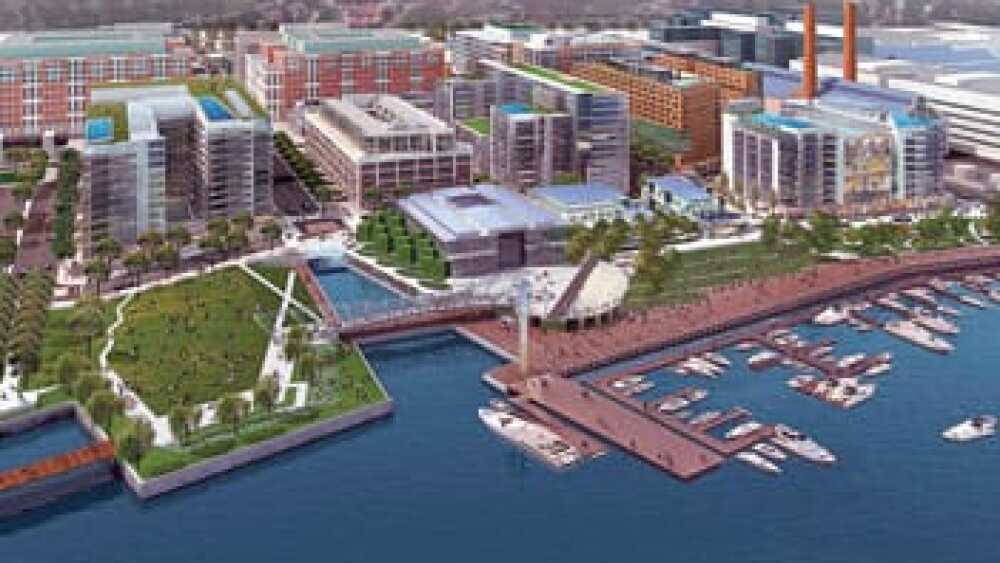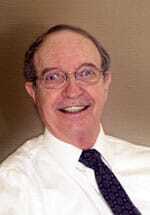When the Urban Land Institute named Forest City Enterprises Inc. and its cochairman Albert B. Ratner as joint recipients of the J.C. Nichols Prize in 2005, Ratner said, “We have a good company . . . and we’re trying to be better.” Many real estate developers might wish to be as successful as Forest City Enterprises, which Ratner led for more than 55 years before retiring from the board of directors while remaining active in the firm as cochairman emeritus.
Established in Cleveland in the 1920s as a family-owned lumber and hardware business, Forest City gradually moved into real estate development following World War II. Albert Ratner, a son of the company’s founder, joined the firm in 1951 after obtaining a degree in forestry from Michigan State University. (He has wryly commented that a business degree might have been a better choice.) He took the company helm as chief executive officer in 1974 and became the firm’s driving force for more than 20 years, during which the company expanded dramatically and developed notable projects across the nation. Today, still involved in development as an in-house commentator and adviser, he remains enthusiastic about Forest City’s projects in the United States and abroad.
Ratner has played a continuing role in civic leadership in Cleveland, including longtime support of the Shoes and Clothes for Kids organization and membership in the advisory committee of the Rock and Roll Hall of Fame; board membership for various groups, including the Cleveland Initiative for Education, the Greater Cleveland Partnership, and the United Way; and membership on local corporate boards and lengthy service as a trustee for the United Jewish Communities.
| Albert B. Ratner |
His entry into civic development in Cleveland began with redevelopment of two major but decrepit buildings in the city’s center—the former Terminal Tower and Union Terminal, once the main train station. Forest City undertook major rehabilitation and upgrading of these structures to create Tower City Center, a mixed-use complex combining a retail mall, office space, and a hotel, all with direct access to a rebuilt train station and three transit lines. For many years after its completion in 1991, the complex was a major downtown attraction, though it has declined in recent years as new office buildings and suburban retail centers have gained importance in the market.
Over the years, Ratner and his colleagues have undertaken a wide variety of developments, generating close to 300 projects in nearly 150 communities and in more than 20 states.
Forest City now claims assets of about $10.5 billion, focused on three strategic types of development:
- a large commercial group of 99 retail, office, arena, hotel, and mixed-use properties, encompassing 30.3 million square feet (2.8 million sq m) of space and 1,573 hotel rooms;
- a residential group owning and/or managing 33,282 units in 120 apartment communities; and
- a land development group working with other corporations and landowners in developing 11,415 acres (4,620 ha) of land for residential, commercial, and industrial uses.
Ratner is proud of these products while lamenting how little the community development process has changed over the years. He decries the continuation of development that emphasizes unsustainable features—sprawling large-lot suburbs with oversized houses, no sidewalks, poor schools, minimal attention to environmental assets or transit opportunities, and what he calls the “same old” retail buildings strung along highways. The market actually values much better forms of city building, he says, as demonstrated by many projects of Forest City and other top-drawer developers. “There’s no bigger thrill than working within urban neighborhoods and commercial areas, where local residents and businesses—and the city at large—benefit from renewing and upgrading run-down areas,” Ratner says.
He cites Forest City efforts in Denver and Washington, D.C. In Denver, the company was selected in 1998 as master developer of Stapleton to create a broad mix of uses on 7.5 square miles (19.4 sq km) once occupied by the city airport and already planned by Peter Calthorpe. Ratner points out that Stapleton has been developing as a mixed-use neighborhood “close to everything important in Denver” and has become an increasingly valuable part of the city and region. “We learned a lot from that project—lessons that we can take to other areas,” he says.
Now he is excited about the Yards project, part of Washington’s 500-acre (200 ha) Capitol Riverfront renewal campaign along the Anacostia River. Forest City was chosen to lead efforts in the Yards, bordering the historic Navy Yard. The firm has the task of converting historic industrial structures for modern-day use within a setting of new buildings. “We will be creating 2,800 residential units, 1.8 million square feet [167,000 sq m] of new office space and 400,000 square feet [37,000 sq m] of retail space, along with new parklands and an improved waterfront,” Ratner says. “That development will change everything around it, including an important part of Washington’s inner city and the Anacostia neighborhoods across the river. That’s the kind of development that restores cities; it’s much more important than spoiling the countryside with outdated sprawl.”






